Today I witnessed a fully fledged Shin-buddhist ritual. It was carried out by priests of the Nichiren sect of Buddhism at a small shrine in the woods dedicated to the kami, Shichimen Daimyojin. Fascinating!
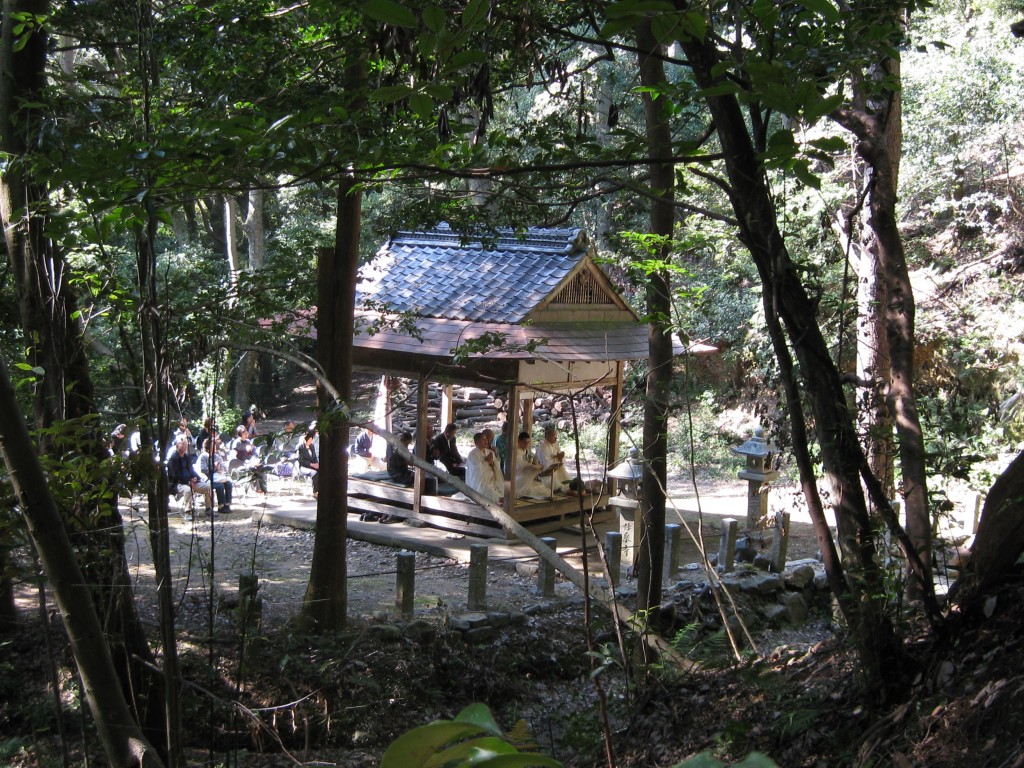
The little shrine of Shichimen-gu
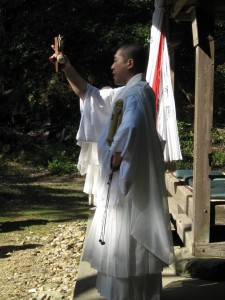
If, like me, you love the spirit of place, then the appeal of Shinto is often in the smallest of shrines. Unmanned and modest, they blend into their surroundings, enhancing rather than dominating the nature they celebrate. One such is little Shichimen-gu in Matsugasaki, here in Kyoto, which I often pass on my walks.
It nestles in the hollow of a hillside, enveloped in the greenery of the woods. A small stream trickles across the clearing, dividing the realm of the kami from that of the human. It’s everything I love about Shinto.
For many years the shrine had a desolate air – neglected, despoiled, the stream dried up. Recently it’s been looking much fresher and happier. When I made enquiries as to who had transformed it, I found to my surprise it was owned by a Nichiren temple. Today (Oct 19) being the day of its annual festival I went along to watch, expecting that a visiting Shinto priest would conduct the ceremonies. I was wrong.
In the clearing a group of twenty elderly parishioners gathered in glorious autumn sunshine. The offerings arrived in unconventional manner, carried casually by a young mother, followed by three priests bearing a box. This was set in the shrine and its doors opened to reveal what seemed to be a Buddhist deity. A candle was lit, and the scene was set. The priests took their place on the stage facing the shrine, and the little clearing filled with the chanting of sutra, accompanied by the occasional banging of a mokugyo drum and the snapping of clappers.
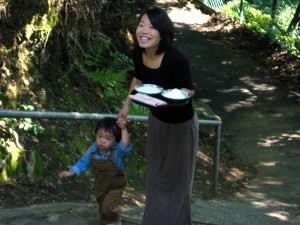
Here come the offerings...
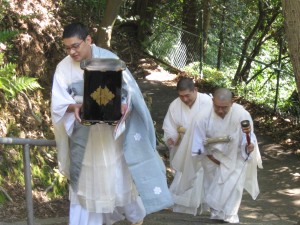
and here come the priests, bearing the kami statue...
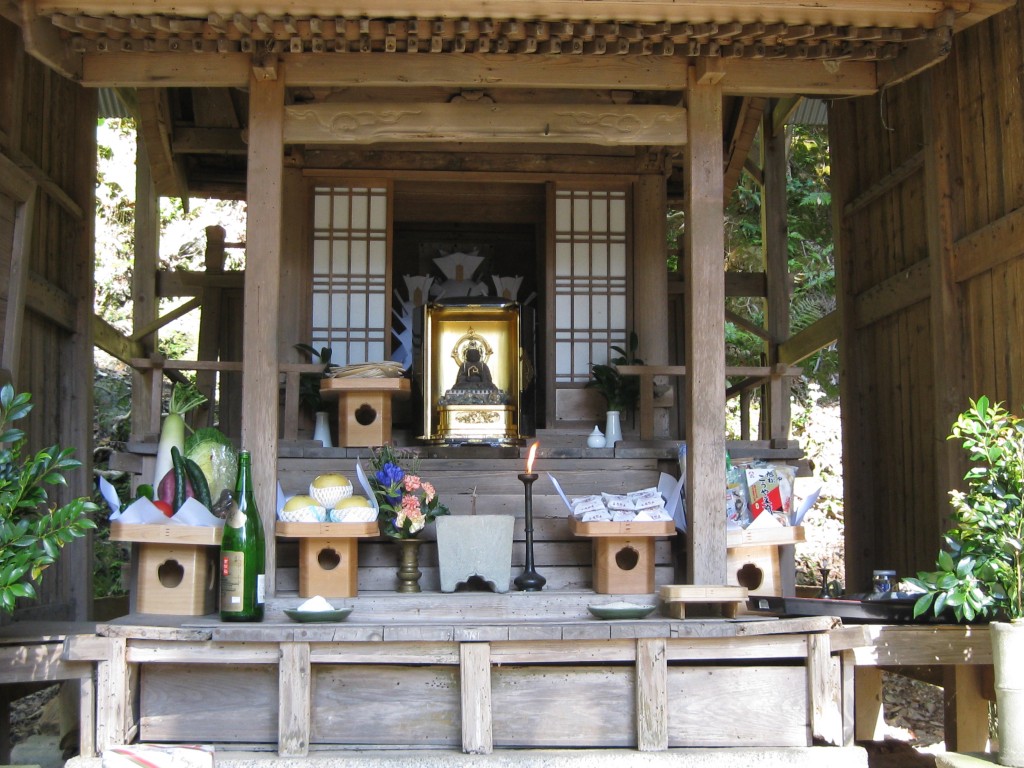
The shrine bedecked with a syncretic mix of decorations from both Shinto (sakaki branches, white gohei zigzag strips) and Buddhist traditions (the lit candle, the flowers, the statue)
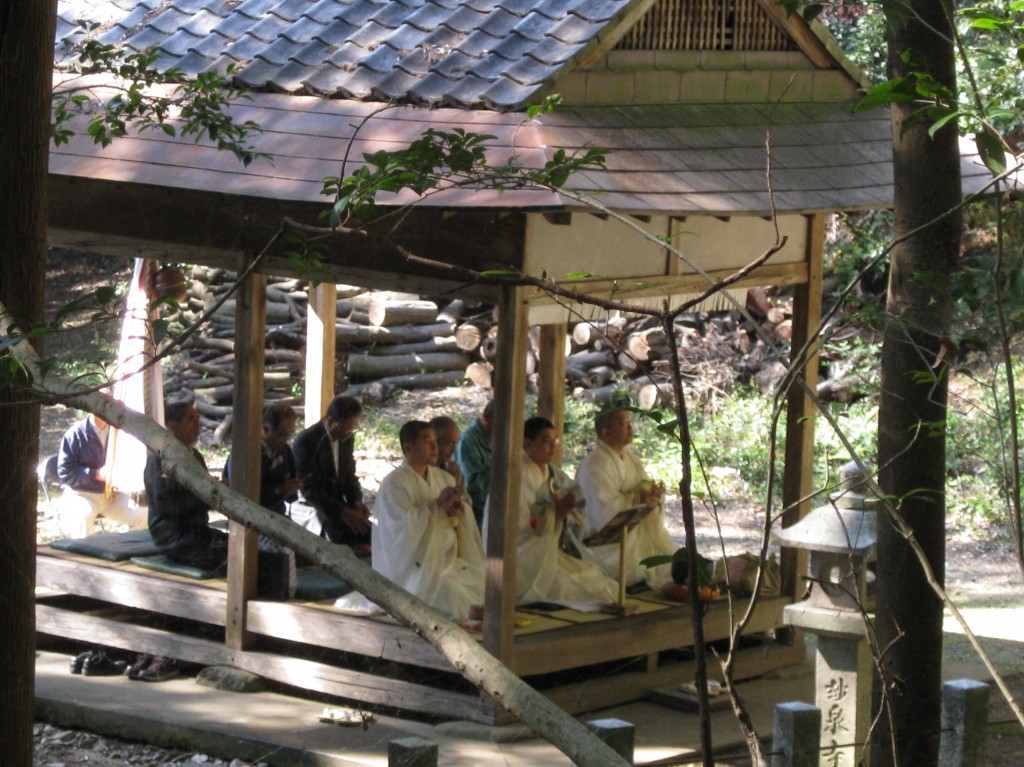
Chanting fills the clearing
After all the chanting, there was a list of requests to the deity which had been written on wooden tablets. These were read out by the head priest. So-and-so, 67 years old, male, wants to request the safety of his family. So-and-so, 45, female, asks for the healing of her mother who has cancer….
Finally the priests got up, faced the parishioners and did some serious snapping of wooden castanets before going around and rubbing people’s shoulders and back. The rituals were over, but before departing envelopes were handed out containing paper stickers the priest called ofuda. These, he said, should be stuck in the north-west of the kaguraden platform, because that was the unlucky direction for the coming year. It was the first Shinto-like thing I’d heard in the whole ceremony.
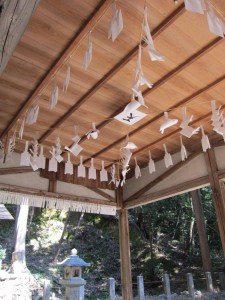
Kaguraden with unusually shaped shide hanging from the ceiling
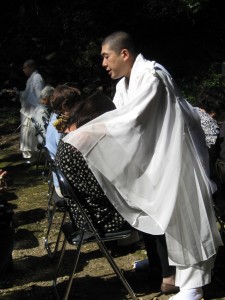
Applying power first hand
Though I had recognised the Nichiren chant of nam myoho renge kyo echoing through the grove, this was all new to me and I asked afterwards about the technicalities. For a start, was there a goshintai (kami spirit-body) in the shrine? It didn’t appear so from what I could see. In Shin-buddhism, I was told, you don’t say goshintai, but go-fu (honorable talisman). In this case the go-fu was a piece of paper on which was written ‘nam myoho renge kyo‘. So where was the kami? The kami was the statue, they told me. Shichimen Daimyojin.
The story goes that Shichimen was a dragon spirit which manifested to Nichiren in the thirteenth century in the form of a beautiful woman to ask how she could obtain enlightenment.
In what seems like a win-win situation, the dragon spirit agreed to guard Nichiren’s temple located on its mountain (Kuonji on Mt Shichimen in Yamanashi), while the sect honours her in return as a boddhisattva. The curious result is a kami in nun’s clothing. In the past Shichimen bosatsu would have been a female counterpart to the syncretic Hachiman boddhisattva, often depicted in priestly garb (Hachiman soryo).
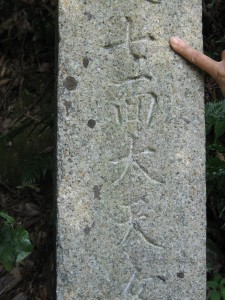
A stone post bearing the Buddhist moniker, Shichimen Daitennyo
But how did all this survive the separation of Shinto and Buddhism in Meiji times? By way of explanation, the youngest of the priests told me how the sect had simply changed the name. Shichimen Daimyojin (a kami) was renamed Shichimen Daitennyo (a Buddhist deity). Once the Meiji mania for separation had passed, the priests simply reverted to the Shichimen Daimyojin name – a cunning priestly ploy! Shin-buddhism may not be what it once was, but it lives on in rituals like this.
I had one final question for the priest: when he was making requests for the parishioners, was he directing them towards a Buddhist deity or towards a kami? He hesitated for a good long while before replying. After all, It was a ridiculously Western analytical quesiton and I presume he’d never given it much thought. In the end, though, he managed to cover himself by saying something like ‘We Buddhists believe all beings are essentially buddha nature…’
Nowadays people tend to think of Shinto and Buddhism as two entirely separate traditions. Here, in this wonderful sun-blessed setting, was a reminder that for well over a thousand years the beliefs were closely intertwined. When is a kami not a kami? Perhaps when it’s a Buddhist…
***************************************
Sutra chanted spells
Sunshine woodland enveloping
Bright spirit of place
****************************************
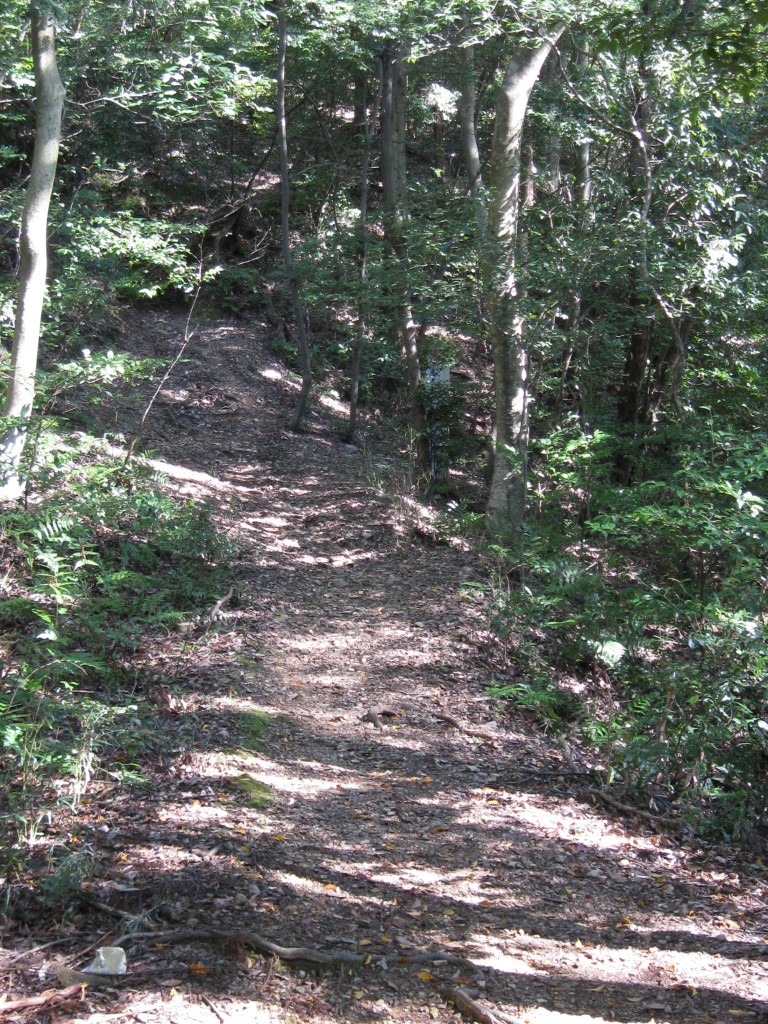
Verdant surrounds leading the heart-mind upwards

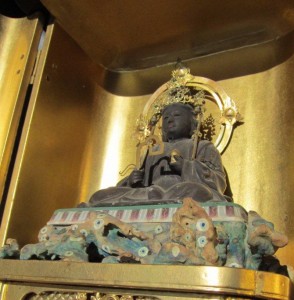
Thanks so much for posting this. I have been by this place several times and have always wondered about it. Especially, as you noted, since it had recently been nicely renovated. Now I know a little bit more about what I am seeing when I pass by.
Thanks also for this blog. It’s a tremendous resource and I have learned a lot!